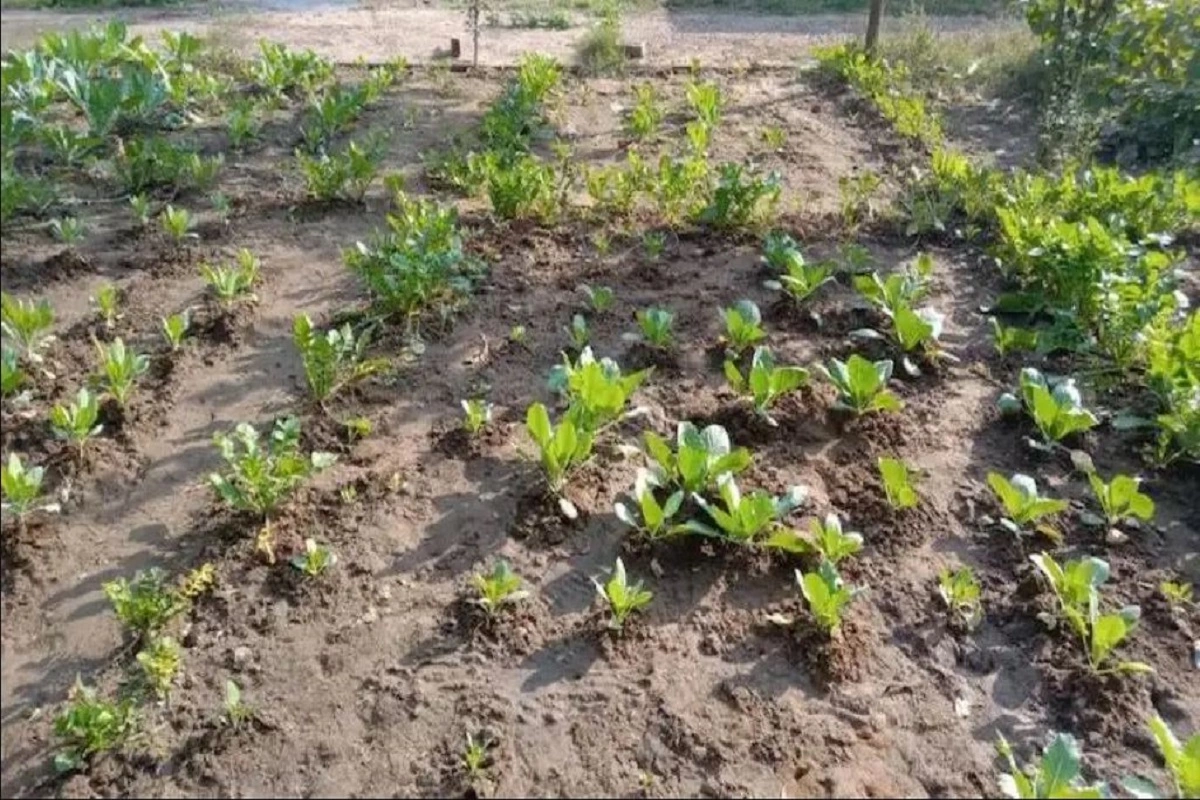
Sustenance Nursery is basic for giving a nourishment diet. The garden not only ensures the family’s nutritional needs, but it also makes better use of the family’s labour, land, and spare time and improves the family’s financial situation. Organic manures and production methods enable them to cultivate numerous seasonal varieties.
Micronutrients are abundant in fruits and vegetables grown in kitchen gardens, especially in low-income households.
Because farm families are involved in agriculture, rural communities have ample space for kitchen gardens. School gardens have been displayed to help youngsters’ sustenance and food inclinations in examinations. It has been demonstrated that school gardens increase adolescent health, influence health and nutrition behaviours, and increase fruit and vegetable consumption.
Nutrition gardens are a low-cost micro-solution for guaranteeing healthy food and balanced nutrition. School gardens can also increase children’s physical activity and dietary intake. In developing nations, micro-gardening is a novel strategy for ensuring food security, youth employment, and an additional revenue stream.
The food was consumed by households, and any leftovers were sold or given to neighbours. Natural product – and vegetable-consuming expanded in recurrence and amount, meeting the healthful necessities of families. According to a study, the variety and quantity of fruits and vegetables in homes with kitchen gardens were three to four times higher.
The nourishment garden develops veggies for the family utilizing wastewater from the house and other biodegradable materials. Market vegetables are frequently produced with the aid of chemical fertilizers. These synthetic compounds are utilized to eliminate weeds, kill bothers, etc, and they bio-accumulate in crops.
A water tank in one of the garden’s corners can be kept, where domestic wastewater will be stored to irrigate the crops. These vegetables have numerous negative effects on our health. Chemical fertilisers in vegetables cause a difference in taste. As a result, we’ll dig shallow trenches in empty land around our house and grow vegetables. The location of the kitchen garden should always be adjacent to the home, preferably behind the kitchen. Because it is close, it takes less time to get there and safety can be easily ensured. An area should be chosen for a kitchen garden close to the house.
The property should be chosen in such a way that irrigation may be simply arranged. Water from the well, bathing water, or kitchen wastewater must be moved to the kitchen garden. The plot should be left empty so that the sun may shine through.
It should be resistant to stray animals and have a high reproductive rate. The size of the kitchen garden plot will be determined by the availability of land, the number of family members, and the availability of time. Cropping is done according to crop cycle, intensive gardening, and intercropping to meet the demands of the household.
Taller plants should be grown in such a way that they do not shade the other plants in this model. Concurrently, the vegetables must be chosen in such a way that they supplement the nutritional needs of the soil. The nutrition garden area must be separated in the following ways:
[ft shall be divided into 8-10 seedbeds, with each seedbed having a width of no more than 2 feet. There should be enough space between the seedbeds for mobility.
[Fruit plants can be planted to the north, and encirclement can be built around the kitchen garden, on which creeper-based vegetables can be cultivated depending on the season.
[Crop rotation and heavy
An area can be built at the opposite corner of the garden to compost crop waste and. biodegradable household garbage.
The chosen site must be ploughed and tilled at least 2-3 times before beginning the nutrition garden.
Before final ploughing, a suitable amount of vermicompost (1kg per square metre) or cow-dung compost (3-4 kg per square metre) must be applied.
Following that, seedbeds will be constructed as planned.
It is also beneficial to use Trichoderma mixed cow-dung manure, manure, or vermicompost.
Following cropping, depending on the need, Ghanjeevamrita or Jeevamrita will be applied. Organic remedies such as Neemastra, Brahmastra, and a sour buttermilk mixture will be used to combat pests and infections. Any chemical fertiliser or medicine should not be used. Vegetable cropping can be done in two ways, depending on the sowing method used:
Planting through transplantation: Brinjal, cauliflower, tomato, chilli, and other plants should be transplanted so that there aren’t too many distinct types of plants. As a result, nursery preparation should be based on plant selection. Seed Sowing: Carrot, radish, okra, and spinach seeds, for example, should be chosen so that they are disease resistant and to the owner’s liking and choice.
Benefits of Nutrition Garden
Organically grown fruits and vegetables have more nutritional value and no chemical residue. It saves us money by avoiding the purchase of vegetables and fruits at the market. A continual supply of fruits and vegetables is maintained based on the family’s needs and preferences.
it’s a significant instrument for children’s training, amusement and fitness because many varieties of vegetables and fruits are grown. It is also an aesthetic source of peace of mind and beauty. Growing population, weather uncertainty, undernutrition, excessive use of chemical fertiliser, and other issues are frequent.
Nutrition gardens can be an effective answer to all of the concerns raised by the aforementioned issues.
To read more such news, download Bharat Express news apps


















